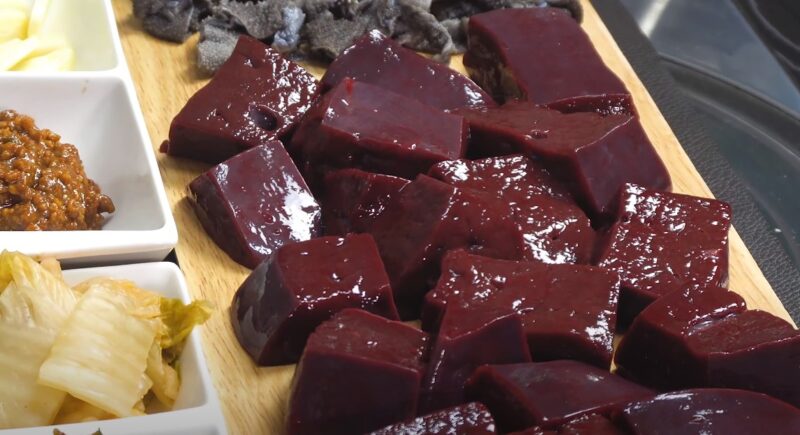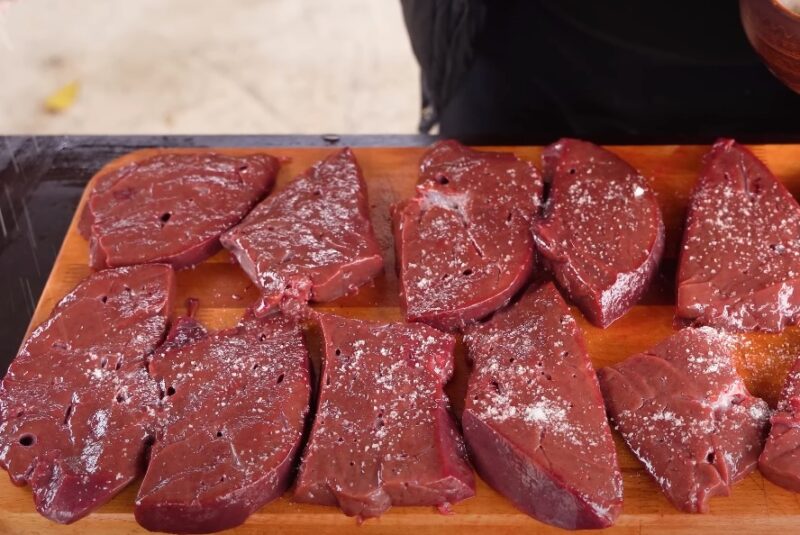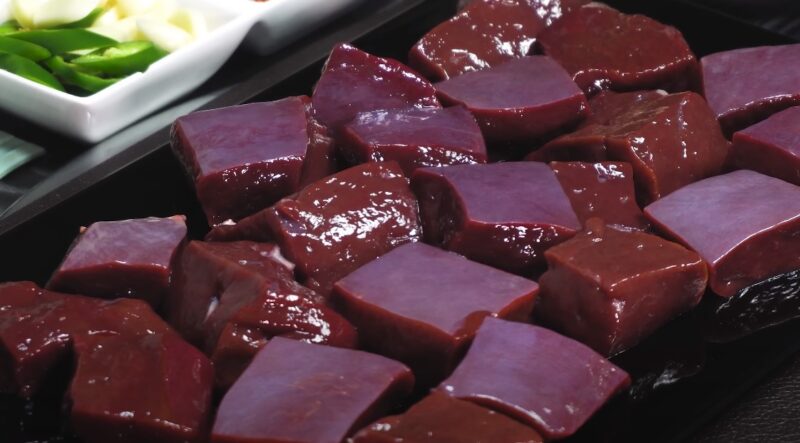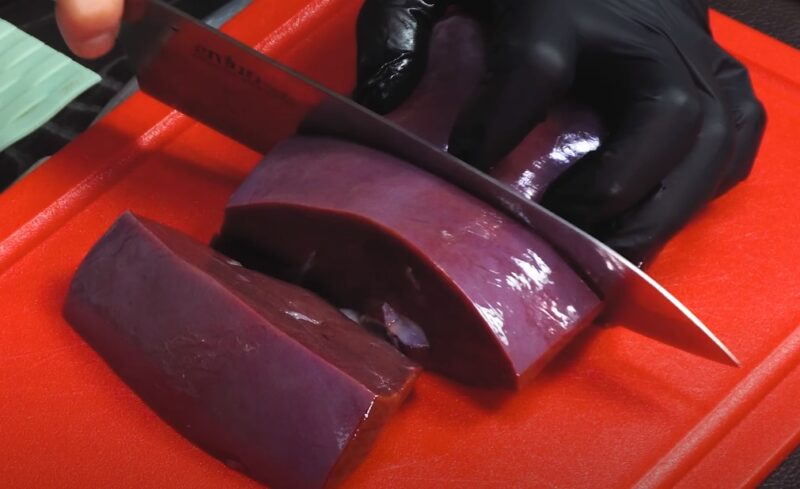As a keen observer of dietary trends, I’ve noticed a unique trend taking the fitness and health community by storm: the consumption of raw liver. Liver King, a prominent social media influencer, has been a significant proponent of this practice, advocating for the daily consumption of raw organ meat. Indeed, these are interesting times in the world of nutrition and wellness.
Let’s get straight to the point: liver is an incredibly nutrient-dense food. It’s not just a good source of protein; it’s also rich in essential vitamins and minerals. The nutritional profile of liver is impressive, making it a popular choice among those seeking to boost their intake of key nutrients.
According to data from the US Department of Agriculture, a 113-gram (4-ounce) serving of raw beef liver offers an abundance of nutrients. Here’s what this serving size contains:
- Calories: 153
- Fat: 4.1 grams
- Sodium: 78 milligrams
- Carbohydrates: 4.4 grams
- Protein: 23 grams
- Iron: 5.54 milligrams
- Potassium: 354 milligrams
- Zinc: 4.52 milligrams
- Selenium: 44.9 micrograms
- Vitamin A: 5,620 micrograms
- Vitamin B12: 67 micrograms
- Vitamin D: 1.36 micrograms
- Vitamin K: 3.5 micrograms
- Folate: 328 micrograms
- Choline: 376 micrograms
- Retinol: 5,590 micrograms
Nevertheless, it’s important to note that the NHS warns about the risks associated with eating undercooked or raw meat, due to the presence of harmful bacteria.
In modern Western cuisine this superfood is often avoided because of its unique texture, pungent flavor, and aroma.
Bacteria like Campylobacter, salmonella, and E. coli are often found in chicken, pork, and beef liver.
Ingesting these bacteria, even in minor quantities, can result in digestive issues and food poisoning.
The Debate Over Freezing Raw Liver

As someone who keeps up with the latest in nutritional science, I’ve come across the argument made by raw liver enthusiasts that freezing can control bacterial growth. However, the reality is that even small amounts of bacteria present in raw liver can lead to food poisoning, diarrhea, and vomiting.
In a discussion with The Sun, Dr. Sarah Jarvis, the Clinical Director of Patient Access, highlighted the severe health risks associated with consuming raw meat. These include serious illnesses like diarrhea, dehydration, stomach pain, and vomiting.
Studies examining patients with Eosinophilia, a condition where there’s an increased count of disease-fighting white blood cells, often suggest a link with parasitic infections, allergies, or even cancer. One key finding in this research is the suggestion that consuming raw animal liver could be a mode of infection for human toxocariasis.
Beef liver, in particular, has been found to have high levels of enterohemorrhagic E. coli O157, both internally and on its surface. This discovery has led to strict regulations in several countries, like Japan, where handling and serving raw beef liver is prohibited due to health risks.
Interestingly, a study conducted in 2019 assessing the impact of Japan’s law against serving raw beef liver revealed no significant decrease in the overall incidence rates of both asymptomatic and symptomatic EHEC infections. This finding underscores the complexity of addressing health risks associated with consuming raw liver.
Choosing Between Grass-Fed and Grain-Fed Raw Liver
Despite the clear warnings from health experts about the dangers of consuming raw liver, I understand that some people might still choose to eat it. If you fall into this category, it’s important to consider the differences between grass-fed and grain-fed liver.
Through my research, I’ve learned that the way cows are fed and treated can significantly affect the liver’s quality and safety. Conventional GMO grains and the use of antibiotics in cattle can have detrimental effects.
The use of antibiotics, high-density farming conditions, and diets rich in toxins can lead to the development of scar tissue on the liver, impaired liver function, and accumulation of toxic substances in the liver tissue.
Studies have revealed that grass-fed beef liver contains up to four times more beneficial phytonutrients than its conventional, grain-fed counterparts. This difference is crucial to consider for those opting to consume raw liver, prioritizing nutritional value and safety.
Comparing Nutritional Values: New Zealand vs. American Beef Liver

In my quest to understand the nutritional differences between various types of beef liver, I’ve come across compelling data comparing New Zealand grass-fed beef liver with conventional American beef liver. The superiority of grass-fed liver is evident in this comparison.
Based on information from the U.S. Department of Agriculture, there are significant nutritional disparities between these two types of liver:
- Vitamin B12: The liver from New Zealand beef offers 43% more Vitamin B12 than its U.S.-raised counterpart.
- Vitamin B5: There’s a 44% higher content of Vitamin B5 in New Zealand beef liver compared to American beef liver.
- Iron: A striking difference is seen in iron content, with New Zealand beef liver providing 72% more than U.S.-raised beef liver.
- Thiamin (Vitamin B1): New Zealand beef liver has a remarkable 96% more Thiamin than U.S.-raised liver.
- Vitamin A: Perhaps most notably, New Zealand beef liver contains a whopping 459% more Vitamin A than liver from U.S.-raised beef.
Potential Benefits

While health officials generally advise against the consumption of raw liver due to the risks involved, it’s important to recognize that raw liver may still offer several significant health benefits.
It’s crucial to mention that these benefits can also be obtained by eating cooked liver or taking desiccated liver supplements. This provides safer alternatives for those looking to harness the nutritional advantages of liver.
One of the key benefits of liver is its status as one of the richest sources of heme iron, the most absorbable form of iron. Heme iron is vital for immune function, cognitive health, and energy metabolism.
High Folate Content in Liver
Folate, the natural form of Vitamin B9, is crucial for the formation and growth of healthy cells. It’s a nutrient not always readily available in a standard American diet. While folic acid, a synthetic version, is added to many products, our bodies struggle to convert it into usable folate. Beef liver, in contrast, is rich in natural folate, which is crucial for producing and maintaining healthy red blood cells, as well as supporting fetal brain development and the formation of the skull and spinal cord.
Raw Liver as a Source of Vitamin B12

In my exploration of the nutritional benefits of different foods, I’ve found that Vitamin B12, which is primarily found in animal products, is present in exceptionally high amounts in raw beef liver. In fact, raw beef liver tops the chart as the food with the highest B12 content on the planet.
A 100-gram serving of raw beef liver astonishingly provides 2471% of the recommended daily value (RDV) for Vitamin B12. This is a staggering amount, showcasing the liver’s role as a powerhouse for this essential nutrient.
Vitamin B12 plays several critical roles in our health. It is necessary for nerve health, the production of DNA and red blood cells, and maintaining normal cognitive functions. In 2013, a high-quality randomized control trial revealed that Vitamin B12 supplementation significantly improved symptoms of depression.
A reassuring fact about Vitamin B12 is that there’s no need to worry about consuming too much of it. Our body has a natural mechanism to store excess Vitamin B12 in the liver for future use. This makes B12 a unique and relatively safe vitamin to consume in higher quantities, especially from a rich source like raw beef liver.
Maximizing Absorption of Fat-Soluble Vitamins

In my journey to understand the benefits of various foods, I’ve learned that fat-soluble vitamins, which include Vitamins A, D, E, and K, are best absorbed when consumed with dietary fat, such as that found in raw liver. This makes liver an excellent source for these essential nutrients.
Liver consumption stands out as a superb way to boost Vitamin D levels, particularly in regions with higher or lower latitudes and during winter months. These are times and places where sunlight exposure, a natural source of Vitamin D, is limited, making dietary sources increasingly important.
Vitamin D plays a vital role in the body, including the absorption of calcium and phosphorus, and supporting the immune system. It’s particularly crucial for the healthy growth of bones and teeth.
Benefit of Liver for Dental Health
Doctor Weston A. Price, a pioneering dentist, observed that traditional cultures consuming liver and other organ meats had notably better bone and dental health than those following a modern Western diet high in sugars and processed foods. The rich content of fat-soluble vitamins in liver likely contributes significantly to these health benefits.
Liver as a Source of Trace Minerals
Trace minerals, though needed in small amounts, are critical for growth, development, and overall health. They play a key role in supporting the nervous system, blood circulation, and hormone growth. Liver is an outstanding source of these vital trace minerals.
Whether raw, dried, or cooked, liver is high in essential trace minerals like copper, phosphorus, selenium, zinc, and iron. A 100-gram serving of raw beef liver provides a significant amount of these trace minerals, underscoring its nutritional value.
| Nutrient | Amount | % Daily Value |
|---|---|---|
| Iron | 4.9 mg | 62% |
| Magnesium | 18 mg | 6% |
| Phosphorus | 387 mg | 39% |
| Zinc | 4 mg | 27% |
| Copper | 9.8 mg | 488% |
| Manganese | 0.3 mg | 16% |
| Selenium | 39.7 μg | 57% |
| Choline | 333.3 mg | 61% |
How Often Should Liver Be Consumed?
While I recognize the exceptional nutritional value of animal liver, it’s crucial to consider the risks associated with its high concentration of certain nutrients. Overconsumption of liver, due to its exceedingly high levels of vitamin A and copper, can lead to health complications.
A 100-gram serving of beef liver contains more than 600% of the recommended dietary intake (RDI) of vitamin A and between 400-700% of the RDI for copper. These figures are significant and warrant cautious consumption.
Vitamin A, a fat-soluble vitamin, accumulates in the human liver. Excessive levels can cause serious health issues such as dizziness, nausea, headaches, liver damage, and birth defects. Similarly, too much iron can lead to symptoms of toxicity, including nausea, vomiting, and diarrhea.
It’s important to note that the symptoms of eating too much liver are typically slow and chronic, rather than acute. This means that the negative effects may develop over time, making it crucial to monitor liver consumption.
When including liver in my diet, I make it a point to check if any supplements I’m taking contain nutrients already abundant in liver. This helps in avoiding excessive intake of these nutrients.
Considering the above factors, it’s generally advisable not to consume liver more than three times a week. Total consumption should ideally remain below 100 grams per serving. In the U.K., the health ministry recommends limiting liver intake to 50 grams, especially for those also getting vitamin A from multivitamins. This cautious approach helps in reaping the benefits of liver while minimizing potential health risks.
Frequently Asked Questions (FAQs)
1. Can liver be part of a vegetarian or vegan diet?
No, liver is an animal product and is not suitable for vegetarian or vegan diets. However, vegetarians and vegans can seek plant-based sources for similar nutrients.
2. Are there any specific types of liver that are more nutritious?
The nutritional content can vary slightly between different types of liver (e.g., chicken, beef, pork), but generally, all are nutrient-dense. Grass-fed and organic sources tend to have a better nutrient profile.
3. How should liver be stored for optimal freshness?
Raw liver should be stored in the refrigerator and used within a couple of days. It can also be frozen for longer storage.
4. Can children safely eat liver?
Yes, in moderation. Due to high Vitamin A content, serving sizes should be smaller and less frequent compared to adults.
5. Are there any specific health conditions that should avoid liver consumption?
People with conditions that require regulation of vitamin A or copper intake, such as certain liver disorders, should consult their healthcare provider before consuming liver.
6. Can liver be included in a weight loss diet?
Yes, liver can be part of a weight loss diet due to its high protein and nutrient content, but portion control is essential due to its high vitamin content.
7. Is it safe to eat liver during pregnancy?
Pregnant women should be cautious with liver consumption due to its high Vitamin A content, and should consult their healthcare provider for advice.
Final Words
Exploring the world of raw liver consumption reveals its impressive nutritional profile, alongside significant health concerns. Whether opting for grass-fed varieties, cooked liver, or supplements, it’s crucial to balance the benefits with potential risks, ensuring a safe and nutritious diet.

